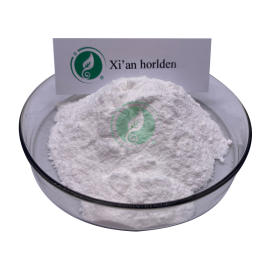Nannon scientists draw pear's 'family tree'
-
Last Update: 2021-03-09
-
Source: Internet
-
Author: User
Search more information of high quality chemicals, good prices and reliable suppliers, visit
www.echemi.com
, pears are an important fruit tree cultivated between the world and date back more than 3000 years. "Because pears are a typical self-confessed affinity species, that is, the same species is usually not normally strong after pollination, this reproductive characteristic makes pears very hybrid, there is extensive gene exchange and genetic recombination between species resources." Therefore, the study of pear's genetic background and relationship has always been difficult, and the differentiation and genetic relationship between different species have not been clearly recognized.
Based on the completed pear genome map, the team collected 113 representative pear species from 26 countries and conducted resequencing and group genetic studies that traced the history of pear reproduction and change to millions of years ago, as if to paint a complete and detailed "family tree" for the pear family.Wu Jun, the first author of the
paper and a professor at Nanjing Agricultural University, said the study clarified the "kinship" within the pear family and revealed that the differentiation time between the two major populations of Asian pears and Western pears occurred about 6.6-3.3 million years ago, that is to say, wild Asian pears and western pears were differentiated before they became cultivation, resulting in large varieties due to the different domestication directions of Eastern and Westerners.
study found that in asia pear and Western pear genome selection domestication interval, there are candidate genes related to growth and development, resistance and other important factors, such as real size, glycoic acid, stone cells, aroma formation and so on. Among them, sugar anabolic related genes are the most, indicating that the sweetness of pear fruit is an important direction of artificial domestication.
Interestingly, the study also found that more than 2,000 years ago, Asian pears and Western pears had "intermarriage", resulting in a new interbreeding species, Xinjiang pears, which is known as 'Kurle pears'. Judging from the age of occurrence, the occurrence of hybridization between the species is likely to be related to the exchange of cultural materials on the Silk Road.
same time, the study also noted that pears promote hetero-intersection and a high degree of genetic diversity by rapidly evolving and balancing choices through the S-RNase gene. (Source: China Science Journal reporter Li Chen, correspondent Xie Zhihua)
This article is an English version of an article which is originally in the Chinese language on echemi.com and is provided for information purposes only.
This website makes no representation or warranty of any kind, either expressed or implied, as to the accuracy, completeness ownership or reliability of
the article or any translations thereof. If you have any concerns or complaints relating to the article, please send an email, providing a detailed
description of the concern or complaint, to
service@echemi.com. A staff member will contact you within 5 working days. Once verified, infringing content
will be removed immediately.







